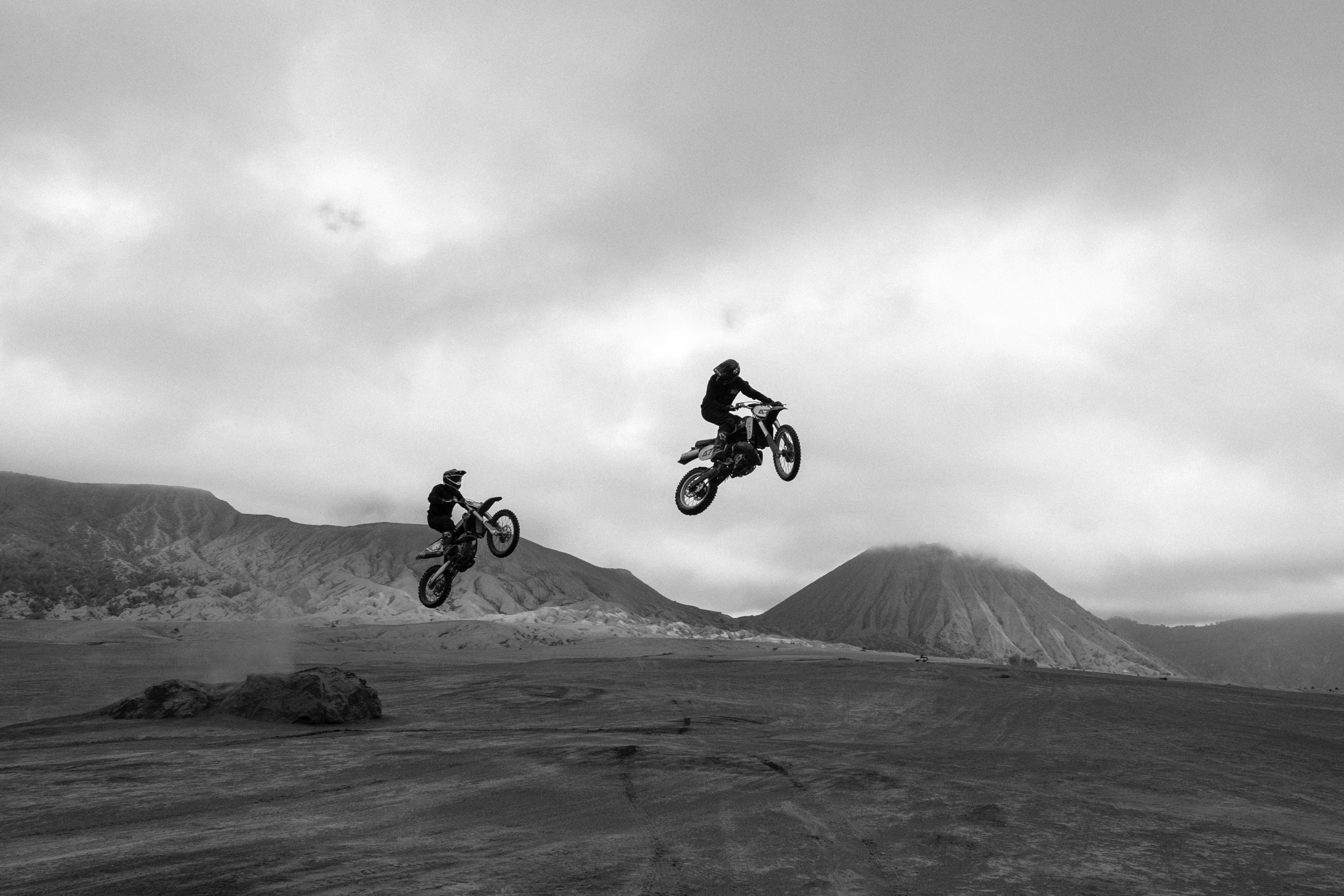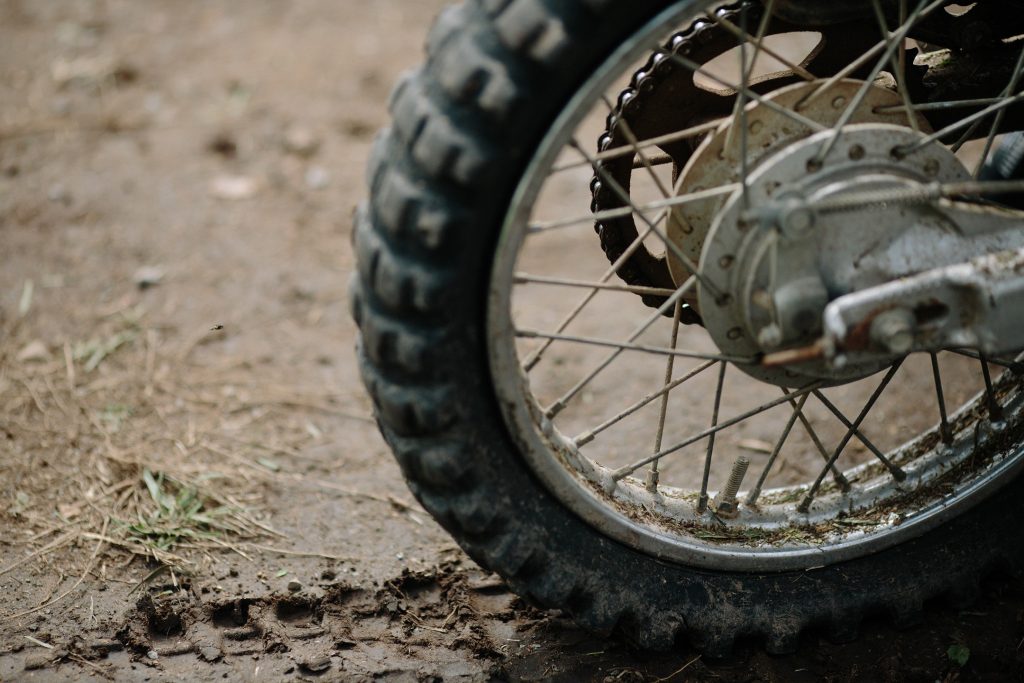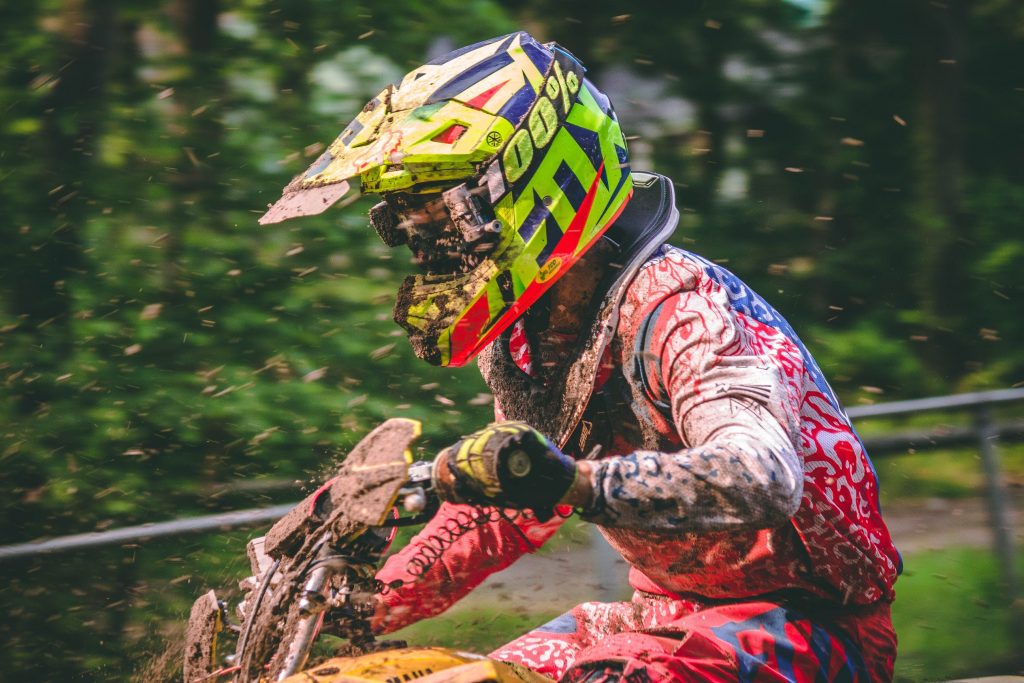
Keep these Tips in Mind to Find the Perfect Beginner Bike to Learn and Build Skills On
So you’ve discovered the exciting world of dirt biking and want to get started.
Excellent! Biking is a fun, thrilling hobby that lets you enjoy tracks and backcountry to the fullest.
As tempting as it is to buy the fastest bike on the market, new riders should start at a reasonable pace to get the hang of riding. This will ensure rider comfort and safety.
Once you’ve grown in skill (and, for younger riders, size), you can move up to the bigger, more powerful bikes.
Until then, it’s worthwhile to look for the right beginner bike that will let you enjoy your rides while you develop your skills.
Whether you’re shopping for yourself or for a young rider in your family, here are a few things you should know when buying your first dirt bike.
Which Dirt Bike Is the Best for A Beginner?
Depending on size and age, the best dirt bikes for beginners are the CRF50 (50cc engine) and the CRF110 (110cc engine) trail bikes.
These bikes feature an automatic clutch, which allows beginners to learn how to control the acceleration, deceleration, and full bike handling without the extra complication of manual gear shifting.
Choosing the Right Size of Dirt Bike
The right size of dirt bike for your needs depends on your size, strength, and comfort level.
Remember, as the bike model number increases, so does the bike’s size and power. The largest bikes have 450cc engines.
If you are small, you won’t need as much power or suspension as a heavier rider.
To find the right bike size, keep these rules of thumb in mind when sitting on a bike:
- Your feet must reach the ground;
- The front third of your foot must be on the ground;
- Your weight should be on your toes;
- Your feet shouldn’t be flat on the ground;
- You can easily and effectively reach all of the controls with; and
- You are comfortable.
This type of footing will give you enough control when handling your bike and will prevent your feet from cramping. Plus, if something happens with your bike while riding, you can keep control of it by having your feet reach the ground.
The last, but most important tip for finding the right size bike for you is to take it for a test ride. This will give you the best, most realistic judgment for how it feels while riding the bike.
Here are the various models and sizes of dirt bikes. As mentioned before, the greater the number, the larger the bike and the more powerful the engine.
For beginners, you will want to stick with the CRF 50 or CRF100.

Junior Riders
CRF50
This is the smallest dirt bike size with the smallest engine. The CRF50 is ideal for young beginners with its automatic clutch.
CRF110
The CRF 110 is larger and more powerful, but is still a good choice for older kids and beginners. Like the CRF50, it is ideal for those who want to start dirt biking and don’t have the experience for manual shifting.
Adults
There is a slightly larger CRF110 model for adults.
The CRF230 model and larger models have manual clutches, so keep this in mind when you’re ready to go bigger.
Remember, as you grow in skill (and size), the bike size should grow with you.
How Fast Do Dirt Bikes Go?
The smallest dirt bikes, with a 50 cc engine, can reach a speed of 25 MPH (40 KPH).
As the size of the bike and engine increase, so will the bike’s power and speed.
The largest dirt bikes typically have a 450cc engine and can reach top speeds between 87 MPH and 100 MPH (140 KPM and 160 KPM).
How Much Is A Dirt Bike for Kids?
For a brand new dirt bike for kids, expect to pay around $1,800.
While searching for a used bike may be the more affordable option up front, it may end up costing you more for replacement parts and repairs. Brand new bikes will be low-maintenance compared to used bikes.
Consider shopping at a power sports dealership instead. They will have dependable brand names from major manufacturers and all the parts you’ll ever need.
They have the expertise to service your bike when needed, keeping your bike in top condition.
Are Dirt Bikes Street Legal?
Dual sport bikes are street legal. These are the best option if you live far from the trails and don’t have a truck or trailer to carry your bike to the trails. Instead, you can just hop on your dual sport bike and take off.

Gear You’ll Need
When you buy your first bike, don’t forget all the dirt bike gear you’ll need for a safe and comfortable ride.
This off-road gear includes:
Helmets
No matter how fast (or slow) you plan to ride your new bike, wearing a helmet is the most important safety measure you can take. You should always protect your head with a helmet while riding.
Make sure the helmet fits well and is from a reputable brand, whether it’s a full-face or flip-front helmet.
For off-road riding, consider an off-road helmet. These have good ventilation, provide protection from sun and mud, and also have enough open space to fit goggles.
Dual-purpose helmets will work for light trail use and adventure rides since they have smaller peaks and a visor.
Eye Protection
While riding, you will also need to protect your eyes from flying rocks, dirt, debris, and even insects.
For off-road helmets, you will need to wear googles that sit well on your helmet, have wide foam padding to absorb sweat, and fit comfortably on your face.
If you choose an adventure/dual sport helmet, it should have a visor to protect your eyes.
Consider tinted visors or goggles to protect your eyes from the glare of the sun.
Bike Boots
Protect your feet with bike boots when riding off-road or on road. These have strong soles and provide ankle protection up to the shin. They should have buckles, straps, or zippers, but not laces.
Padded Clothing
Bike jackets, shirts, and suits have padding to protect your elbows, shoulders, and spine from falls. You may also want to wear a back protector, which looks like a plastic vest, for off-road rides.
Knee Pads
Your knees are fairly vulnerable while riding, so keep them protected with knee pads.
Neck Brace
If you plan to do some extreme riding, then you might want to consider a neck brace. But if you plan to stick to light riding on trails, you can probably do without.
Kidney Belts
If you plan to go on rough terrain, or on long rides, a kidney belt will make riding more comfortable by supporting your kidneys and lumbar region of your spine.
Gloves
Protective riding gloves, such as leather, will keep your hands safe from the rough off-roads and flying debris.
Drink Reservoirs or Camel Backs
Stay hydrated while riding using a drink reservoir or camel back.
Dirt Bike Training Wheels for Kids
There are also training wheels available for younger kids who need a bit of practice to find balance on a dirt bike.
Visit the dirt bike experts for help choosing the right gear and bike for a safe and comfortable ride. Once you’re equipped, you can start enjoying your dirt bike adventures.